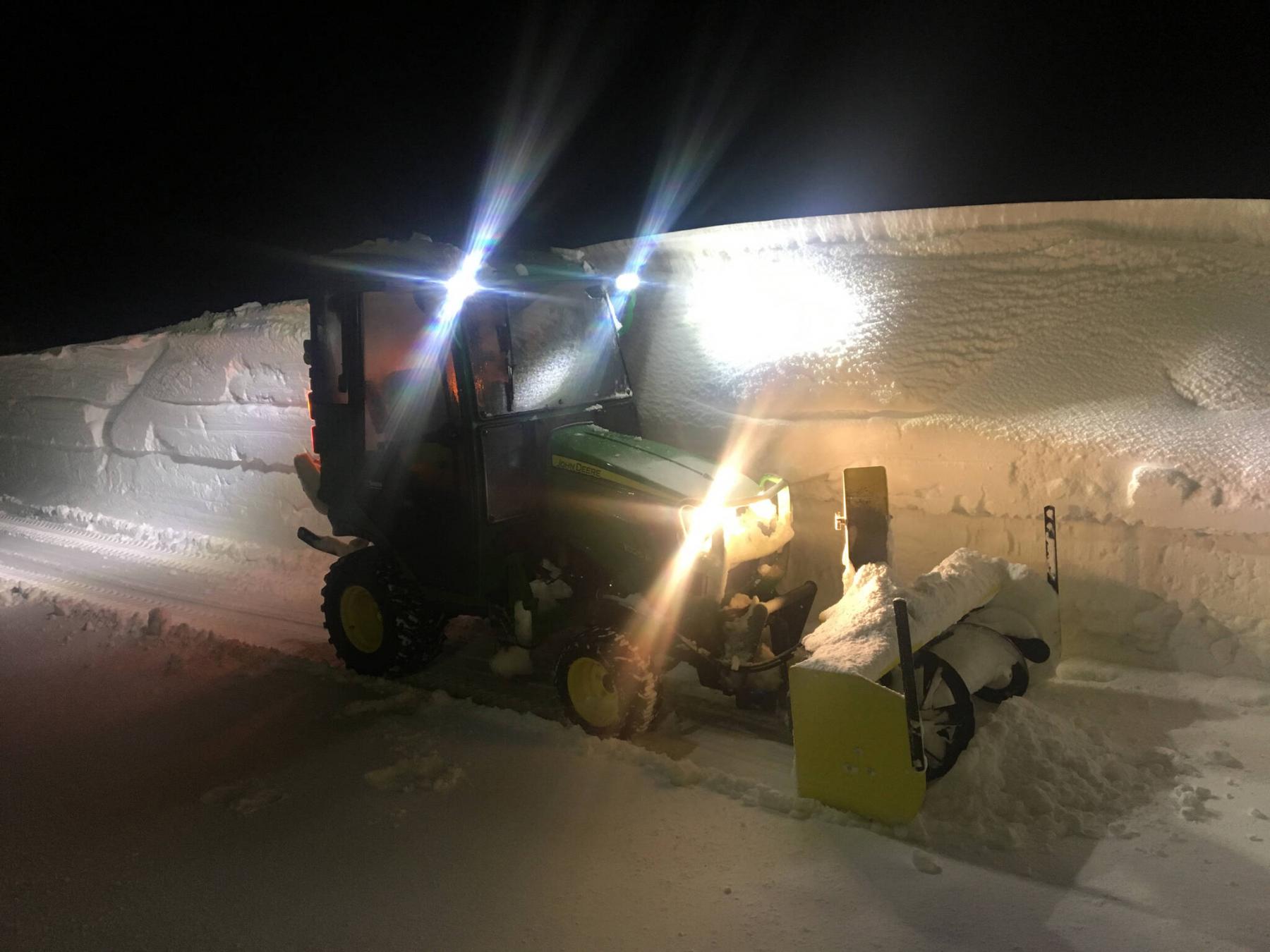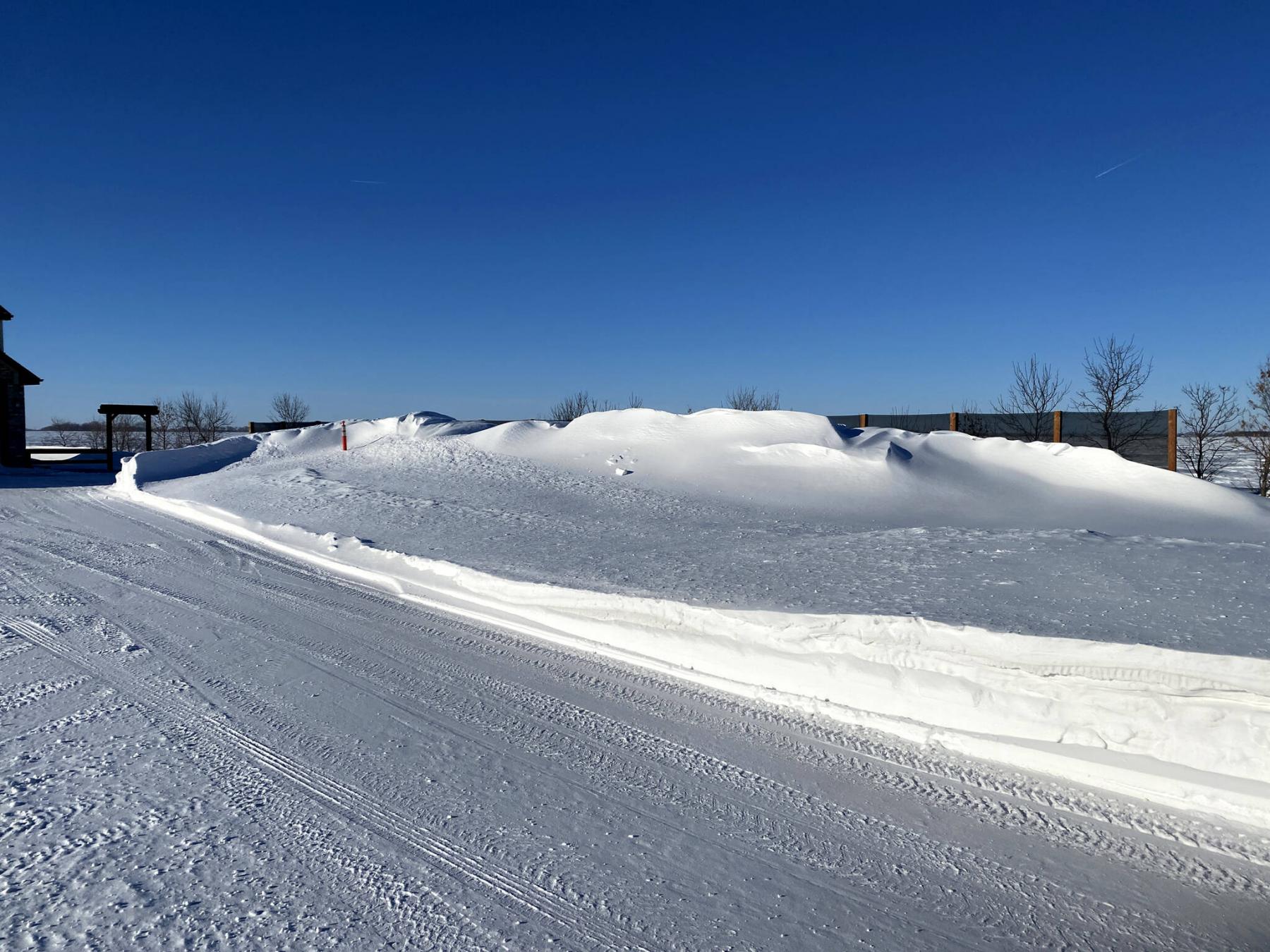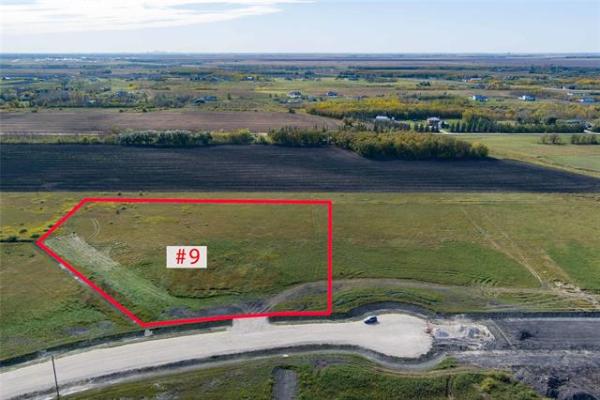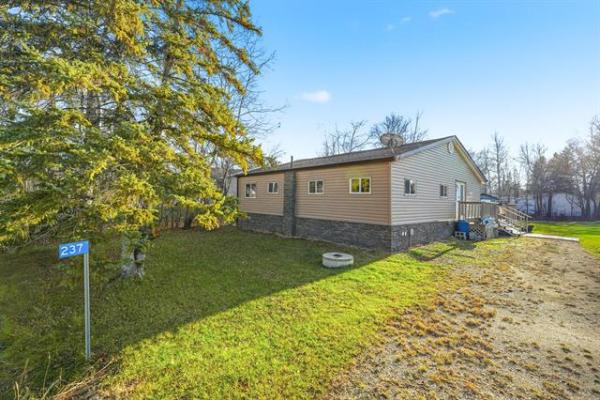
Although the fence now alleviates some snow-clearing urgency, the John Deere 1025R and its front-mount snowblower remains an essential tool for rural life.

The area with mesh fencing produces a slow-moving taller drift in high winds, whereas the area adjacent the edge of the fence creates a less tall but fast-moving drift, causing snow-clearing urgency.
At a very young age, the importance of self-reliance had been instilled. No matter the required task, it became a priority to tackle it on my own, whenever possible. As such, my adult life revolves around creating scenarios whereby the necessary tools and knowledge are at my disposal when needed. Although it has taken longer than I’d hoped, I’m nearly at that point with snow-management on my rural property.
At the tender age of ten, one of my first part-time jobs involved shoveling snow for a neighbour or two, a few houses from my childhood home in Norwood Flats. There was something satisfying about that endeavour — there was a set area, a tangible accumulation of snow, and a productive way the snow could be displaced and piled elsewhere, thereby completing the task. And although the winter months caused this process to repeat many times, the same satisfaction was attained upon every completion.
Living on a rural property with a driveway whose surface area is hundreds of times greater than any sidewalk or driveway shoveled as a child, has proven to be a much bigger challenge. None-the-less, the same satisfaction is achieved once this more elaborate endeavour is finished. Unfortunately, there are times during the worst of winter when my John Deere 1025R simply cannot keep up with the volume of snow, and the speed at which the snow drifts form, especially when the sustained wind is relentless over a period of 12 hours so. During those times in the past, it was still necessary to call in the boys with big toys, huge tractors with front loader buckets that could carry a small automobile, able to move snow and create huge wind-break hills along the north and south edges of my property. These hills are two-fold; the snow used to make the hills clears my driveway, and the hills themselves act as a massive wind break for ensuing windy snow-drift forming days. Although my gratitude swells for the job these guys perform, my desire for self-sufficiency regarding winter maintenance is always heightened.
A plan was devised to reduce the speed at which the snow drifting would form on my property, thus easing some of the urgency to snow clear, during stormy winter nights, the anxiety and stress attributed to ensuring passage to and from the property can be overwhelming.
In the summer of 2020, the first phase of an engineered wind-mesh fence was installed along the south boundary, east and west of my 6,000 square-foot shed to the east side edge of the house, and along the north boundary matching in length the south run between the house and shed. Five-foot high wind-reduction mesh was initially mounted along the topside of the eight-foot 6x6 posts, at twelve-foot sections. The lower 30-plus inches was left open. During the winter of 2020/2021, the upper mesh did restrict the wind, but did not curtail the formation of snow drifts early on — only once the drifts themselves reached a height of three feet did the upper five-feet of mesh begin to slow the formation of snow drifts. Now that this information was revealed, it was clear that the lower open portion should be fitted with mesh as well.
Mid-way through the summer of 2021, new 30-inch high mesh was installed below the existing five-foot mesh, nearly filling the entire eight-foot high section between every 6x6 post. With the process completed, winter 2021/2022 would reveal whether Phase 2 would prove successful.
And this winter has provided several days of nasty wind speeds. Now that the wind-mesh fence starts at ground level, the desired results have been attained (for the most part). Although drifts continue to form and move towards the driveway, the speed at which they travel has been greatly reduce. Rather than a three-foot high drift crossing the driveway within a couple of hours of a 30-kph sustained wind, the drift grows taller, and creeps towards the driveway, allowing the necessary time to keep it at bay and thereby minimizing the urgency of clearing “right away, or we’ll be snowed-in”. The wind-mesh fences have literally altered the annually consistent snow drift patterns experienced on this property since moving here in 2003. And now that I know they work as anticipated, impending snowstorms with high winds aren’t as stressful, and that my friends, is the point. I actually enjoy snow-clearing, just never really cared for the urgency of having to do it, for fear of losing mobility to and from the property.
The majority of the south side is now protected from harsh winds. However, an area from the east end of the fence line to the highway still allows the winds to form drifts across my driveway at an impressive pace. And the north boundary only protects the driveway nearest the house, in front of the garage stalls. Although my clearing tasks have benefited from these new fence lines, the on-going mesh fence experiment is sure to continue. Phase 3 may entail the introduction of fencing extension along the north boundary. As for the portion of driveway closest to the highway that remains unprotected, my John Deere 1025R remains at the ready. Thankfully, the strong winds in winter no longer trigger as much anxiety — the wind mesh increases the likelihood that I can manage all snow-clearing tasks, on my own.
RenoBoss.Inc@outlook.com




